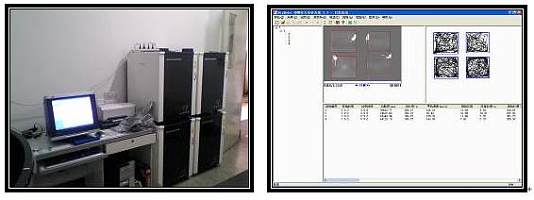Electrophoretic Karyotype Analysis Pulsed Field Gel Electrophoresis
互联网
617
Electrophoretic karyotyping is a term first introduced by Carle and Olson in 1985 (1 ) to describe the use of the new technique of pulsed field gel electrophoresis (PFGE) to visualize whole chromosomes from unicellular organisms. Conventional agarose gel electrophoresis has a useful upper size limit of about 20 kilobases (kb). PFGE extends this limit to at least 5.7 megabases (Mb) (2 ) and may be up to 12 Mb (3 ), encompassing the size range of chromosomes from many bacteria, fungi, and protozoa. Chromosomes from most of these organisms fail to condense sufficiently during mitosis to allow karotyping by light microscopy and, prior to the advent of PFGE, estimates of genome size and chromosome number were based on genetic linkage analysis, DNA reassociation kinetics, and in some cases, electron microscopy.









